16.03.2022
NASA's DART asteroid-slamming mission builds on tiny diamond-tipped tool tech
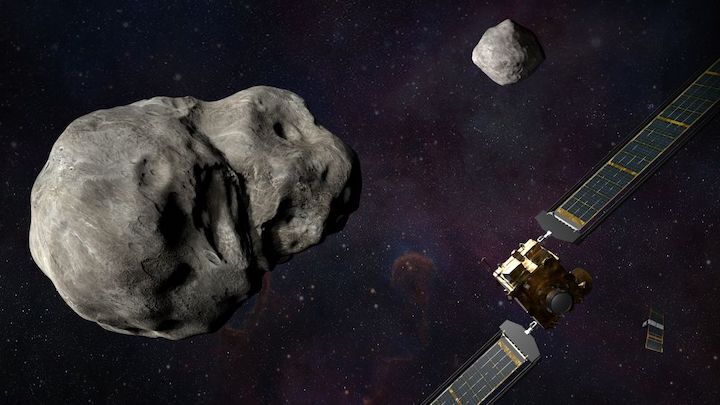
An artist's depiction of the DART spacecraft approaching the Didymos system. (Image credit: NASA/Johns Hopkins APL/Steve Gribben)
A NASA spacecraft is on its way to slam into a space rock, but what happens next is still unclear.
The Double Asteroid Redirection Test (DART) mission launched in November and will arrive at its destination in late September. If all goes well, the impact will change the orbit of a small asteroid, Dimorphos, around a larger asteroid called Didymos. But just how much the orbit will change is difficult to predict. Leading up to the mission, scientists used samples collected from two different space rocks to test in an attempt to understand the future impact.
That work has relied on a precision pressing tool known as a nanoindenter, which has a pyramid-shaped diamond tip measuring only a few millionths of a millimeter, according to a statement from the European Space Agency (ESA). The tiny tool is a crucial implement for dealing with the small, precious space rock samples scientists have gathered on Earth.
One of those samples comes from the Japanese sample-return mission Hayabusa, which visited an asteroid called Itokawa but experienced challenges that meant the spacecraft brought home only grains of the extraterrestrial material.
"Their small size presented potential challenges," study co-author Jordi Sort, a research professor at the Catalan Institution for Research and Advanced Studies at the Autonomous University of Barcelona (UAB), said in the statement. "The three grains we received are only about a thousandth of a millimeter each. However, we still managed to test successfully, using a pyramidal indenter with a tip radius of about 50 nanometers — millionths of a millimeter — across."
Measuring the asteroid samples' physical properties allowed scientists to better understand how an asteroid may behave during an impact with Earth as well as informing the DART mission.
"The success of AIDA [the Asteroid Impact and Deflection Assessment collaboration, of which DART is one component] and comparable asteroid deflection efforts depends on good knowledge of the physical properties of the object to be deflected," study co-author Josep M. Trigo-Rodriguez, an astrophysicist at the Institute of Space Sciences at Spain's National Research Council, said in the statement.
The Hayabusa analysis built on previous work that used the nanoindenter to test samples collected from the Chelyabinsk meteor that exploded over Russia in 2013. Adding a second space rock sample was a "welcome opportunity," scientists said in the statement.
"Then came the welcome opportunity to perform comparable testing on samples of the fine surface grains known as 'regolith' returned by Japan's Hayabusa sample return mission," lead study author Safoura Tanbakouei, who was a doctoral candidate at ICE-CSIC at the time of the study, said in the statement. "This is unique, unmodified material taken directly from the surface of an asteroid and brought back to Earth," said Tanbakouei, who is now a postdoctoral researcher at the University of Hong Kong's Planetary Spectroscopy and Mineralogy Laboratory.
The Itokawa samples were placed in resin and then polished with diamond paste. The nanoindentation process measured the asteroid samples' comparative hardness and elasticity, both factors that might affect DART's impact.
"Our results reveal similar hardness for both sets of samples, but the Itokawa regolith grains possess enhanced elasticity, which has significant implications," Trigo-Rodriguez said in the statement. "There is fine-grained regolith covering the surface of many asteroids, theoretically produced by the ongoing process of impacts on asteroid surfaces as well as flaking of rock due to temperature extremes. The summary of our findings is that these surface regolith particles are more compacted than the material beneath them — a natural consequence of their having survived long exposure times on an asteroid's surface — indicating, in turn, an enhanced ability to absorb elastic energy during an impact."
The nanoindenter results suggest that if DART hits a region with more dust, the impact may be more efficient moving Dimorphos' orbit. And thanks to an Italian cubesat flying with the mission, scientists will be able to see the impact site both before and immediately after the collision.
Quelle: SC
----
Update: 25.08.2022
.
NASA Invites Media to Witness World’s First Planetary Defense Test
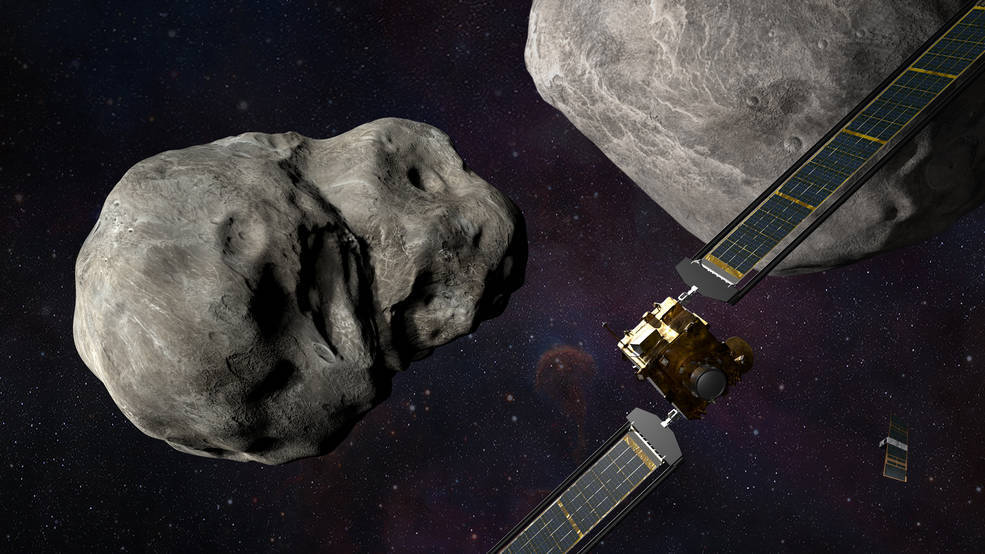
Lee esta nota de prensa en español aquí.
NASA’s Double Asteroid Redirection Test (DART), the world’s first mission to test technology for defending Earth against potential asteroid or comet hazards, will impact its target asteroid—which poses no threat to Earth—at 7:14 p.m. EDT on Monday, Sept. 26.
Among other activities, NASA will host a televised briefing beginning at 6 p.m. on Sept. 26 from the Johns Hopkins Applied Physics Laboratory (APL) in Laurel, Maryland. APL is the builder and manager of the DART spacecraft for NASA.
This test will show a spacecraft can autonomously navigate to a target asteroid and intentionally collide with it to change the asteroid’s motion in a way that can be measured using ground-based telescopes. DART will provide important data to help better prepare for an asteroid that might pose an impact hazard to Earth, should one ever be discovered.
The following is a list of activities for DART’s impact with the asteroid Dimorphos (all times Eastern):
Monday, Sept. 12
- 9 a.m. – NASA will host a hybrid media day at APL focused on the technology enabling the DART spacecraft to autonomously navigate to and impact its target asteroid. Participants include leaders from NASA and the DART mission team. In-person attendees will have an opportunity to tour the DART mission operations center at APL, located at 11100 Johns Hopkins Road in Laurel, Maryland.
Media interested in participating must RSVP by completing this form no later than 3 p.m. on Tuesday, Aug. 30. NASA’s media accreditation policy for on-site and virtual activities is available online.
Thursday, Sept. 22
- 3 p.m. – Media briefing at NASA Headquarters to preview DART’s final activities before its impact with Dimorphos. The media briefing will take place in the Webb Auditorium at NASA Headquarters in the Mary W. Jackson building, 300 E. Street, SW in Washington and include senior leaders from NASA and APL.
Media interested in participating must RSVP by completing this form no later than 3 p.m. on Thursday, Sept. 15.
Monday, Sept. 26 (DART Impact Day)
Media interested in covering the DART impact from APL must complete this form by 3 p.m. on Friday, Sept. 2.
- 6 p.m. – Live coverage of DART’s impact with the asteroid Dimorphos will air on NASA TV and the agency’s website. The public also can watch live on agency social media accounts on Facebook, Twitter, and YouTube.
- 7:14 p.m. – DART’s kinetic impact with asteroid Dimorphos.
Interview Opportunities
Remote live and taped interviews via Zoom will be offered from 6 a.m. to 1 p.m. on Monday, Sept. 26. To book a live shot window, media should fill out this form by 3 p.m. on Thursday, Sept. 22.
A series of panels featuring NASA and APL mission experts will take place at APL on Monday, Sept. 26. Opportunities for interviews before and after DART’s asteroid impact will be available by filling out this form.
NASA Social
Stay connected with the DART mission and share your experience watching DART’s impact with an asteroid on Twitter, Facebook, and Instagram with #DARTMission and #PlanetaryDefender. Follow and tag these accounts:
- Twitter: @NASA, @NASASolarSystem, @AsteroidWatch, @JHUAPL
- Facebook: NASA, NASA Solar System Exploration, Johns Hopkins University Applied Physics Lab
- Instagram: @NASA, @NASASolarSystem, @JohnsHopkinsAPL
Become a Planetary Defender
Support the DART mission by becoming a “Planetary Defender!” Participants who take a short quiz will earn a certificate and badge they can download, print, and share on social media.
Quelle: NASA
----
Update: 11.09.2022
.
DART sets sights on asteroid target
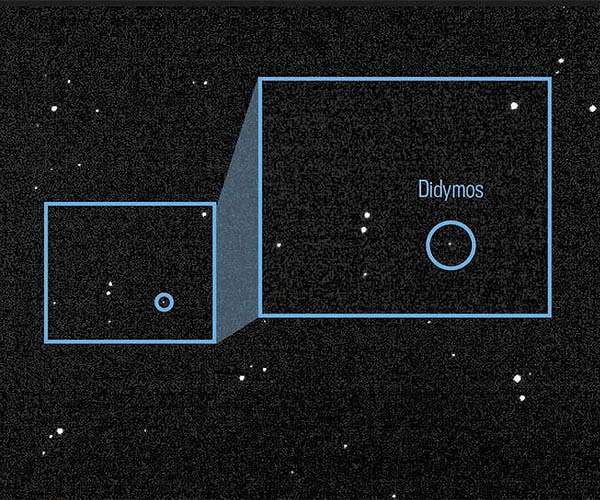
NASA's Double Asteroid Redirection Test (DART) spacecraft recently got its first look at Didymos, the double-asteroid system that includes its target, Dimorphos. On Sept. 26, DART will intentionally crash into Dimorphos, the asteroid moonlet of Didymos. While the asteroid poses no threat to Earth, this is the world's first test of the kinetic impact technique, using a spacecraft to deflect an asteroid for planetary defense.
This image of the light from asteroid Didymos and its orbiting moonlet Dimorphos is a composite of 243 images taken by the Didymos Reconnaissance and Asteroid Camera for Optical navigation (DRACO) on July 27, 2022.
From this distance-about 20 million miles away from DART-the Didymos system is still very faint, and navigation camera experts were uncertain whether DRACO would be able to spot the asteroid yet. But once the 243 images DRACO took during this observation sequence were combined, the team was able to enhance it to reveal Didymos and pinpoint its location.
"This first set of images is being used as a test to prove our imaging techniques," said Elena Adams, the DART mission systems engineer at the Johns Hopkins Applied Physics Laboratory (APL) in Laurel, Maryland.
"The quality of the image is similar to what we could obtain from ground-based telescopes, but it is important to show that DRACO is working properly and can see its target to make any adjustments needed before we begin using the images to guide the spacecraft into the asteroid autonomously."
Although the team has already conducted a number of navigation simulations using non-DRACO images of Didymos, DART will ultimately depend on its ability to see and process images of Didymos and Dimorphos, once it too can be seen, to guide the spacecraft toward the asteroid, especially in the final four hours before impact. At that point, DART will need to self-navigate to impact successfully with Dimorphos without any human intervention.
"Seeing the DRACO images of Didymos for the first time, we can iron out the best settings for DRACO and fine-tune the software," said Julie Bellerose, the DART navigation lead at NASA's Jet Propulsion Laboratory in Pasadena, California. "In September, we'll refine where DART is aiming by getting a more precise determination of Didymos' location."
Using observations taken every five hours, the DART team will execute three trajectory correction maneuvers over the next three weeks, each of which will further reduce the margin of error for the spacecraft's required trajectory to impact.
After the final maneuver on Sept. 25, approximately 24 hours before impact, the navigation team will know the position of the target Dimorphos within 2 kilometers. From there, DART will be on its own to autonomously guide itself to its collision with the asteroid moonlet.
DRACO has subsequently observed Didymos during planned observations on Aug. 12, Aug. 13 and Aug. 22.
Johns Hopkins APL manages the DART mission for NASA's Planetary Defense Coordination Office as a project of the agency's Planetary Missions Program Office. DART is the world's first planetary defense test mission, intentionally executing a kinetic impact into Dimorphos to slightly change its motion in space.
While the asteroid does not pose any threat to Earth, the DART mission will demonstrate that a spacecraft can autonomously navigate to a kinetic impact on a relatively small asteroid and prove this is a viable technique to deflect an asteroid on a collision course with Earth if one is ever discovered. DART will reach its target on Sept. 26, 2022.
Quelle: SD
----
Update: 17.09.2022
.
NASA’s DART Deploys Camera Probe Ahead of Asteroid Impact
Called LICIACube, the Italian-built probe will take images of DART’s impact with asteroid Dimorphos on September 26.
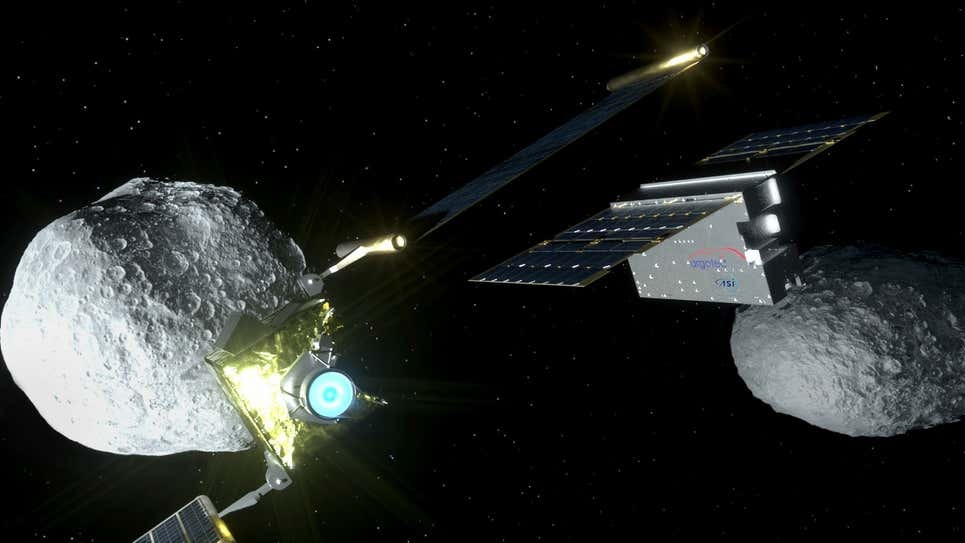
DART won’t survive its mission to deflect an asteroid, but the recently deployed LICIACube—a tiny probe equipped with cameras—will document the encounter in gory detail.
NASA’s Double Asteroid Redirection Test (DART) is the space agency’s first demonstration of a defense strategy to protect against threatening asteroids. The 1,376-pound spacecraft is scheduled to smash into Dimorphos—the junior member of the Didymos binary asteroid system—on September 26 at 7:14 p.m. ET. Dimorphos poses no threat to Earth, but the experiment, should it work, will slightly nudge the moonlet from its current trajectory. In the future, a similar strategy could be used to deflect a genuinely threatening asteroid.
DART will not survive the encounter, but its onboard camera, called DRACO (Didymos Reconnaissance and Asteroid Camera for Optical navigation), will provide a first-person perspective of the collision. Nearby, LICIACube (pronounced LEE-cha-cube) will use its two onboard cameras to document the impact and its aftermath.

Controllers issued a command on September 12 for DART to release the 31-pound (14-kilogram) LICIACube, which it had been carrying since its launch on November 24, 2021. A signal confirming the deployment arrived one hour later, much to the delight of Simone Pirrotta, LICIACube project manager for the Italian Space Agency.
“We are so excited for this—the first time an Italian team is operating its national spacecraft in deep space,” he said in a statement. “The whole team is fully involved in the activities, monitoring the satellite status and preparing the approaching phase to the asteroid’s flyby.”
LICIACube, short for Light Italian CubeSat for Imaging Asteroids, was designed and built by Argotec, an Italian aerospace company, with contributions from the National Institute of Astrophysics and the Universities of Bologna and Milan. The tiny probe—built from a 6-unit cubesat bus—is equipped with two optical cameras, named LUKE (LICIACube Unit Key Explorer) and LEIA (LICIACube Explorer Imaging for Asteroid). Together, LUKE and LEIA will collect data to confirm the success of the DART mission and to inform future models of similar tests done with kinetic impactors.
Pirrotta and his colleagues are currently calibrating LICIACube by capturing dynamic images of distant celestial bodies. The tiny probe will receive a series of maneuvering commands just prior to DART’s fatal rendezvous with the 520-foot-wide (160-meter) Dimorphos. NASA’s spacecraft, traveling at speeds reaching 15,000 miles per hour (24,000 kilometers per hour), will beannihilated by the impact. LICIACube will travel past the asteroid roughly three minutes after the encounter to confirm the impact, document the spread of the resulting dust plume, attempt to capture an image of the newly formed crater, and document the opposite side of Dimorphos, which DART will never see.
“We expect to receive the first full-frame images and to process them a couple of days after DART’s impact,” Pirrotta said. We’ll then use them to confirm impact and to add relevant information about the generated plume—the real precious value of our photos.”
By looking at the debris plume and impact crater, scientists hope to gain a better understanding of the asteroid’s structure and surface material. Observations of Dimorphos’s non-impacted hemisphere will improve estimates of the moonlet’s dimensions and volume.
NASA and ESA are planning to document the impact from afar. DART, should it be successful, will alter the speed of Dimorphos in its orbit around the 2,650-foot-wide (780-meter) Didymos “by a fraction of one percent, but this will change the orbital period of the moonlet by several minutes—enough to be observed and measured using telescopes on Earth,” according to NASA. Didymos is roughly 0.75 miles (1.2 km) from its larger companion.
Approximately 28,000 near-Earth asteroids have been documented over the years, with roughly 3,000 discoveries made each year. None of these known asteroids pose a risk to us within the next 100 years, but the chance exists that a threatening asteroid will suddenly come into view. The DART test, should it succeed, could equip us with a valuable strategy for mitigating these existential risks.
Quelle: GIZMODO
----
Update: 19.09.2022
.
NASA will crash a $488 million spacecraft into an asteroid. Here's why
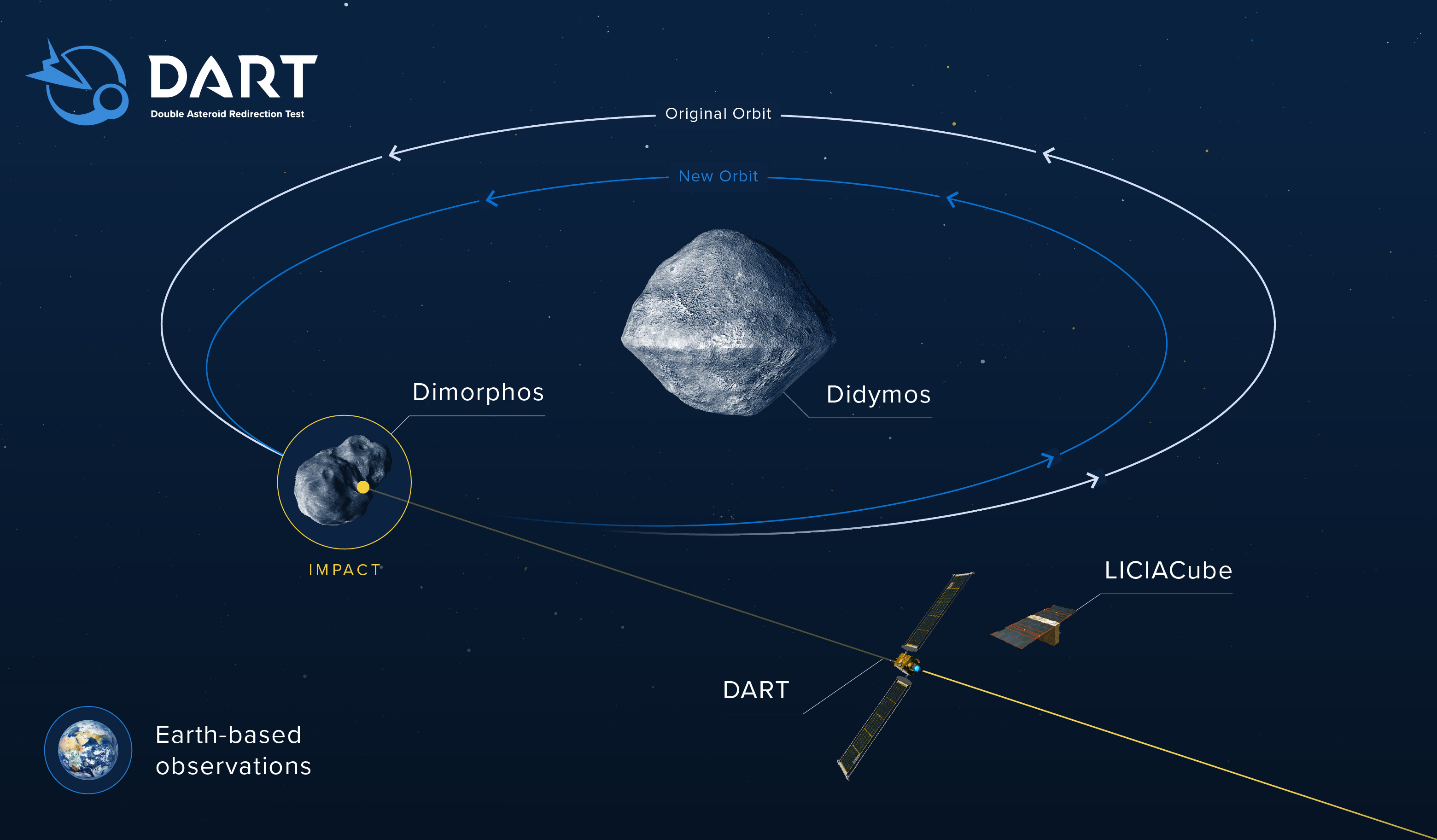
In eight days NASA will deliberately crash a spacecraft into an asteroid in a $US330 million ($AUD487.5 million) attempt to change the asteroid's course.
It's the world's first full-scale mission to test technology for defending Earth against potential asteroid collisions.
So what is the DART mission? And should we be concerned about NASA's strike?
Why is NASA doing this?
Space engineers want to learn how to deflect asteroids in the event one is ever discovered on a collision course with Earth.
The DART mission, or the Double Asteroid Redirection Test, will help determine if intentionally crashing a spacecraft into an asteroid is an effective way to change its course.
Cue references to disaster films like Don't Look Up and Armageddon, although astronomers believe it's unlikely such devastation could happen in the near future.
DART is the world's first full-scale mission to test technology for defending Earth against potential asteroid collisions.
By studying the asteroid's path after the collision, scientists believe they will better understand how collisions could be used to deflect Earth-bound asteroids and comets.
What is the name of the asteroid that NASA is going to hit?
The mission is targeting Dimorphos, a small "moonlet" or asteroid orbiting a largernear-Earth asteroid named Didymos.
Near-Earth objects are asteroids and comets with orbits that place them within 50 million kilometres from Earth. NASA says detecting the threat of NEOs that could cause grave harm is a primary focus.
Dimorphos is about 160 metres in diameter and is the smallest thing NASA has ever tried to hit.
The larger asteroid Didymos is about 780 metres in diameter. It's name is the Greek word for "twin", a nod to how the asteroid forms a binary system with the smaller asteroid.
DART will be travelling at roughly 6 kilometres per second when hits Dimorphos.
When will Dart crash into the asteroid?
Monday, September 26 at about 7.14pm US time, is the expected time (that's about 9:14am Tuesday 27 September AEST).
It's been a 10-month journey for the spacecraft that, not measuring its two solar panel wings, is the size of a small car.
Does the asteroid pose any threat?
Nope, the asteroid poses no threat to Earth.
"This is humanity's first ever planetary defence test," Bobby Braun, head of space exploration at the Johns Hopkins Applied Physics Lab said at a media briefing.
"Everything about this is a test. It's being done in a safe manner. There's 0 per cent chance that this asteroid could come towards the Earth, so it's actually an ideal set-up for our science team, for the engineering team … and for those of us around the world to learn and to make ourselves better through this mission."
On the day of impact, images will stream back to Earth via images recorded by LICIACube, a small satellite provided by the Italian Space Agency.
The briefcase-size satellite is now travelling behind the spacecraft to record the collision.
At the time of impact, Didymos and Dimorphos will be located within 11 million kilometres to Earth.
What will happen after impact?
The plan is to fly the DART spacecraft directly into the moonlet bumping it hard enough to shift its orbital track around the larger asteroid.
After impact, scientists will use ground-based telescopes to observe if Dimophos's orbit has changed, and by how much.
As for fears of comets and a catastrophic impact with Earth, NASA says there are no known threats to our planet for at least the next 100 years.
The data collected will contribute to planetary defence strategies, especially the understanding of what kind of force can shift the orbit of a near-Earth object that could collide with our planet if one is ever discovered.
Quelle: ABC News
----
Update: 23.09.2022
.
ESA deep space network tracks DART asteroid impact
In-depth

The target asteroid Dimorphos poses no threat to Earth, and don’t worry – DART’s kinetic impact cannot shove the asteroid into an Earth-impacting path. What this experiment should do, is slightly alter the asteroid’s orbit, helping scientists learn more about deflection for if – when – a dangerous asteroid is discovered.
Watch the impact live as data streams in from DART to ground stations around the globe, including ESA’s New Norcia station in Australia. The NASA programme starts at midnight CEST and will be streamed on ESA Web TV with contributions from ESA’s Hera mission team. Follow @esaoperations on Twitter for live updates from ESA’s mission control, home to Estrack HQ and the Space Safety Programme.
Impacting an asteroid, before an asteroid impacts us
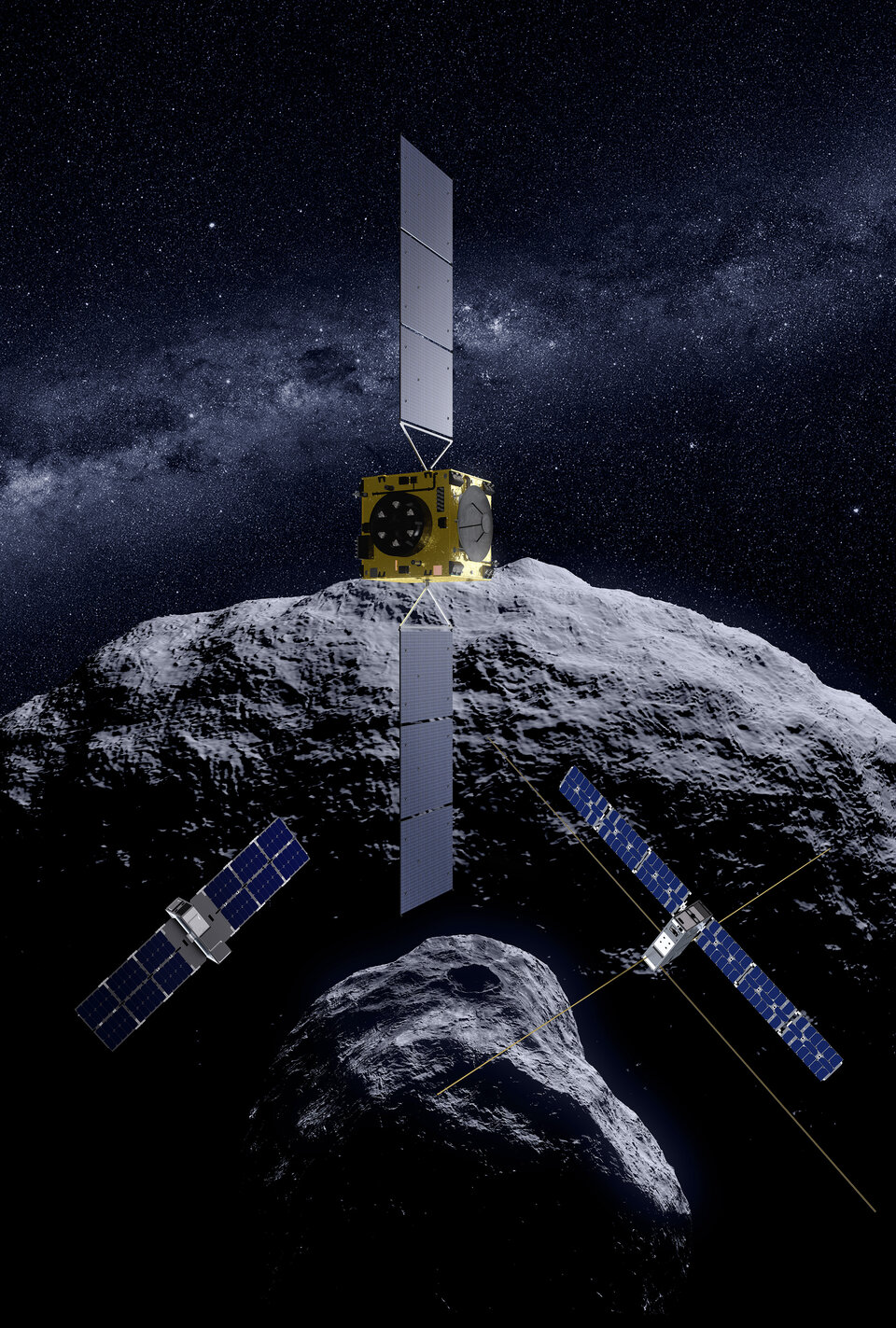
NASA’s Double Asteroid Redirection Test, DART, is currently hurtling through space towards a pair of gravitationally bound asteroids in orbit around the Sun. The binary asteroid system is known as Didymos, and the smaller ‘moonlet’ of the pair, Dimorphos, will be the first asteroid in the Solar System to be the target of a humanmade ‘kinetic impactor’.
In the aftermath of the impact, ESA’s Hera mission will fly to the stricken rock to carry out an in-depth analysis of the crater formed, the mass of the asteroid and a great deal more, turning this grand experiment into an understood and repeatable planetary defence technique.
All this, however, depends on DART hitting its target. The spacecraft will be hurtling through space at 22 000 km/h at a distance of 11 million kilometres from Earth, closing in on a moving object about the same size as the Great Pyramid of Giza – so this is no easy feat.
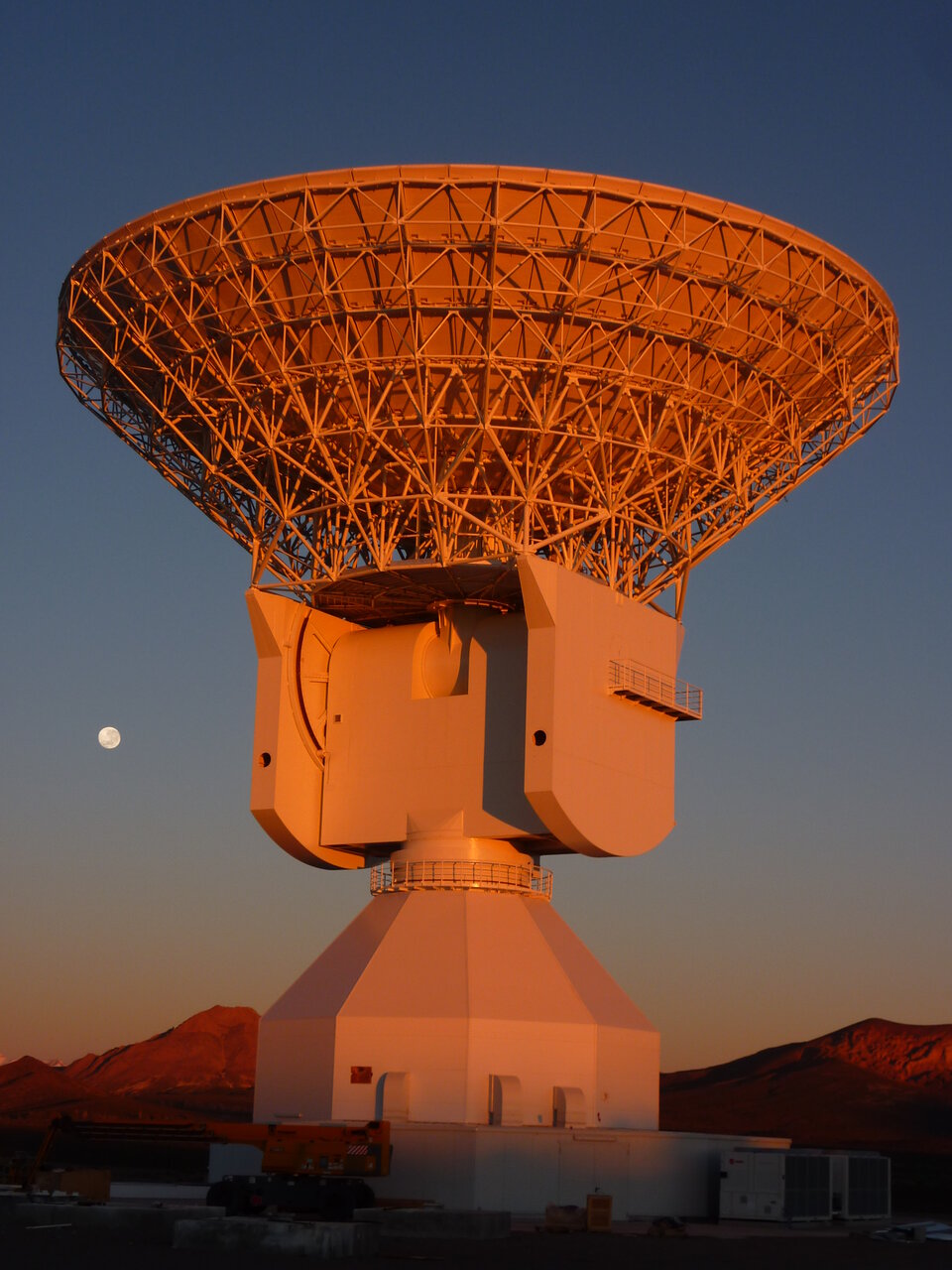
In fact, it is only in the last hour before impact that DART will even be able to distinguish Dimorphos from the larger central asteroid, using its sophisticated onboard guidance, navigation and control system to autonomously manoeuvre it towards its unknowing target.
ESA’s network of eyes on the sky, Estrack, is supporting NASA in the weeks before impact by tracking DART, helping to provide data on its status, location and velocity and crucially keeping a constant watch during its final 12 hours when a live stream of images will be pulsed home to be made available and watched ‘live’ by countless around the globe.
Giant antennas come together
Since May, ESA’s 35-metre deep space antenna in Malargüe, Argentina, has been helping to provide ultra-precise measurements of DART’s position with regular tracking time dedicated to the mission in the months leading up to impact.
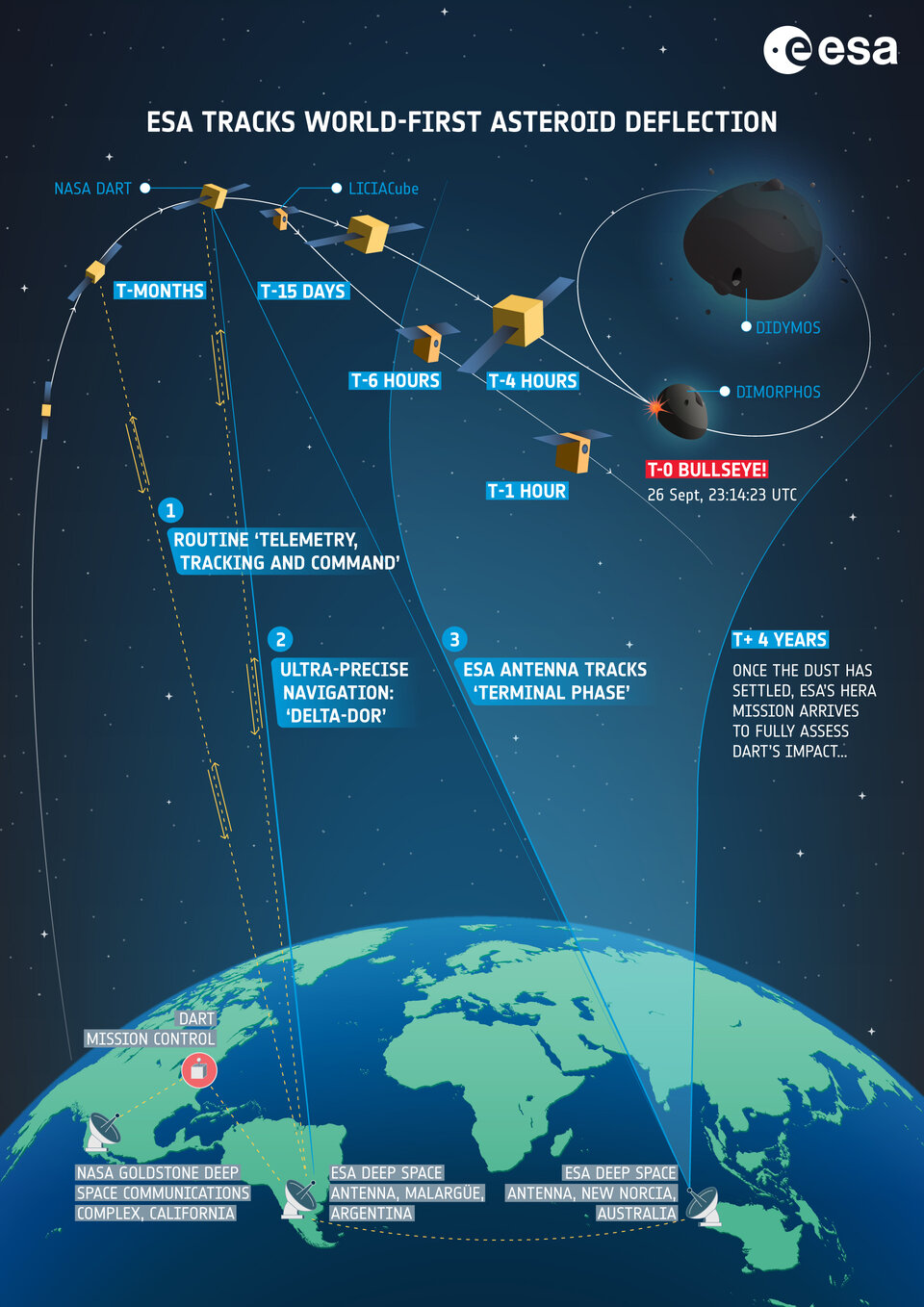
The station creates a geographical triangle on Earth when paired with the NASA antennas located in Canberra, Australia and the Goldstone in California. Tracking DART simultaneously from each location allows for an extremely precise determination of its location, orientation and speed. This method of tracking is known as Delta-DOR (delta-Differential One-way Range).
ESA’s Deep space antenna in Australia has also been receiving monthly status reports from DART. Such reports are ‘downlinked’ to Earth from the spacecraft and include details on its status, location and any commands it was given – all crucial information for NASA’s mission control.
Now in the final ten days before impact, tracking has ramped up even more as ESA’s Estrack network performs daily contacts with the spacecraft to fill the gaps in NASA Deep Space Network. Each of these ‘passes’, i.e. the period in which the spacecraft is visible and communicating with the antenna, lasts for about one hour every day until DART enters the final phase of its mission.
BULLSEYE
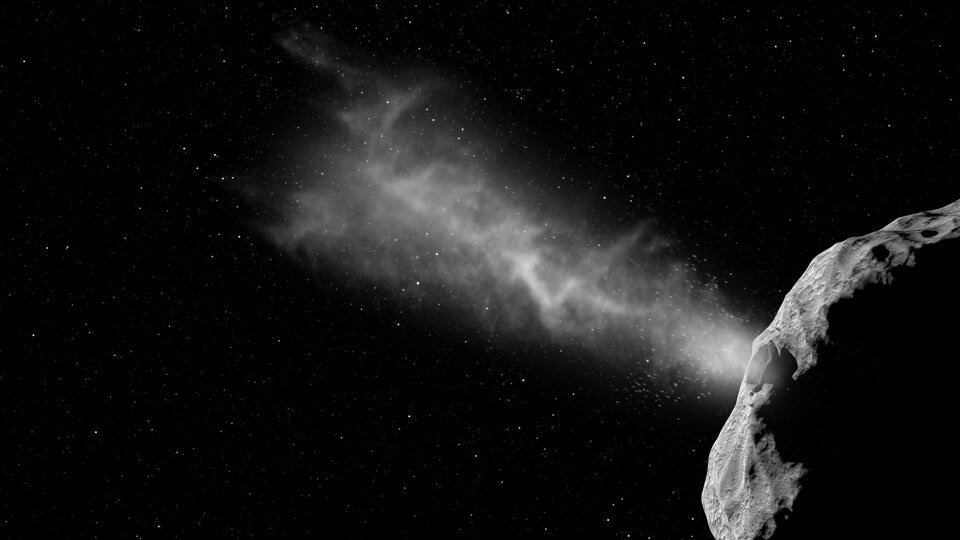
In the last few hours of DART’s life, it will send to Earth a constant stream of images revealing its target resolve into view from blurry mass to small asteroid, dramatically getting closer and larger until … bullseye! This will be the first ever non-fiction movie depicting real-life asteroid deflection, and it’s critical that every scene arrives back home.
“It is vital for mission success that there are no gaps in coverage during DART’s terminal phase, and so antennas around the world will be working in unison, backing each other up and filling in any gaps in NASA’s Deep Space Network coverage – we cannot lose the link to DART for a moment,” explains Daniel Firre, ESA’s DART Service Manager.
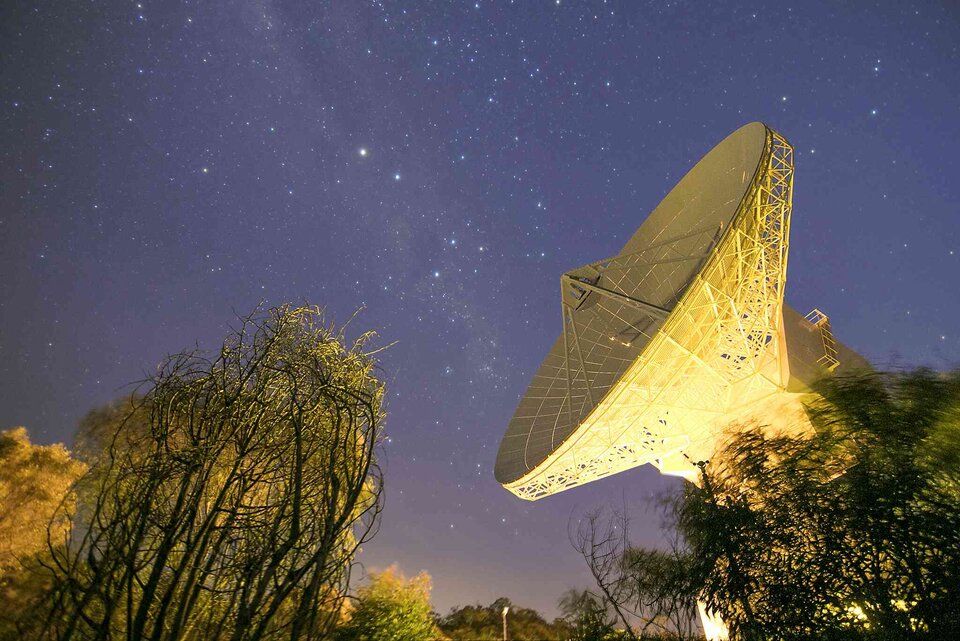
During this final period starting 12 hours before impact and lasting a couple of hours after, ESA’s New Norcia station in Australia will provide a continuously updated stream of data and images from the mission. Data from DART will have travelled 11 million kilometres before it arrives at the 35-metre dish in Australia, all in about half a minute.
“Our giant dish in Australia will be in touch with DART as it crashes into Dimorphos. In the last minutes, data will stream in from the DRACO instrument onboard. This data will be used by scientists to estimate the mass of the asteroid, surface type and impact site,” explains Suzy Jackson, Maintenance & Operations Manager for the New Norcia ground station.
“In addition, the data from DART will be used at NASA’s mission control to adjust mission parameters, and it’s really important the information arrives as close to real-time as possible.”
Italian CubeSat to witness the crash
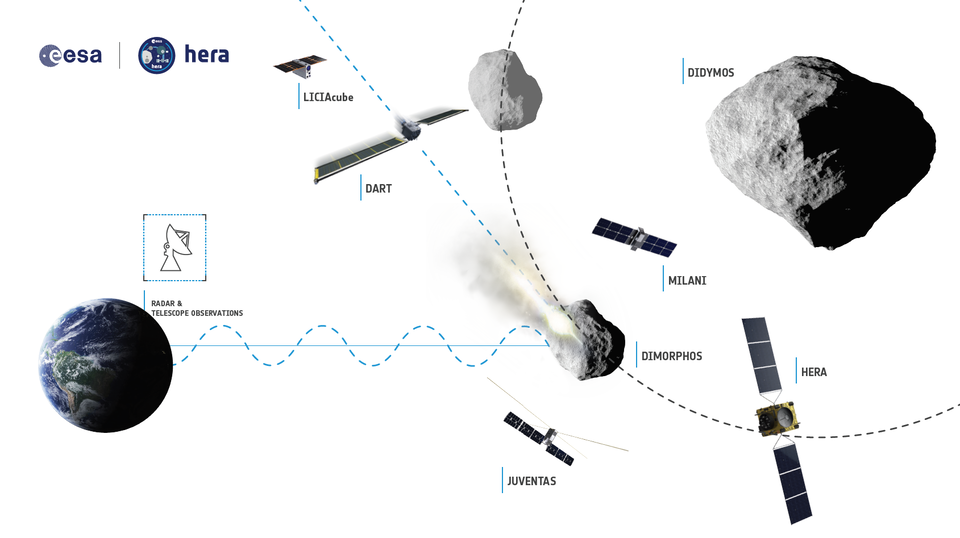
The one thing DART can’t show us is the visual result of its impact with the asteroid. As it completes its job, the spacecraft will be destroyed, and communications to Earth will cease. Excitingly, a shoebox-sized CubeSat provided by the Italian Space Agency (ASI) will be riding with DART.
The 14 kg LICIACube will separate from DART fifteen days before impact to capture images of the crash and the resulting cloud of ejected matter.
Nearer to Hera

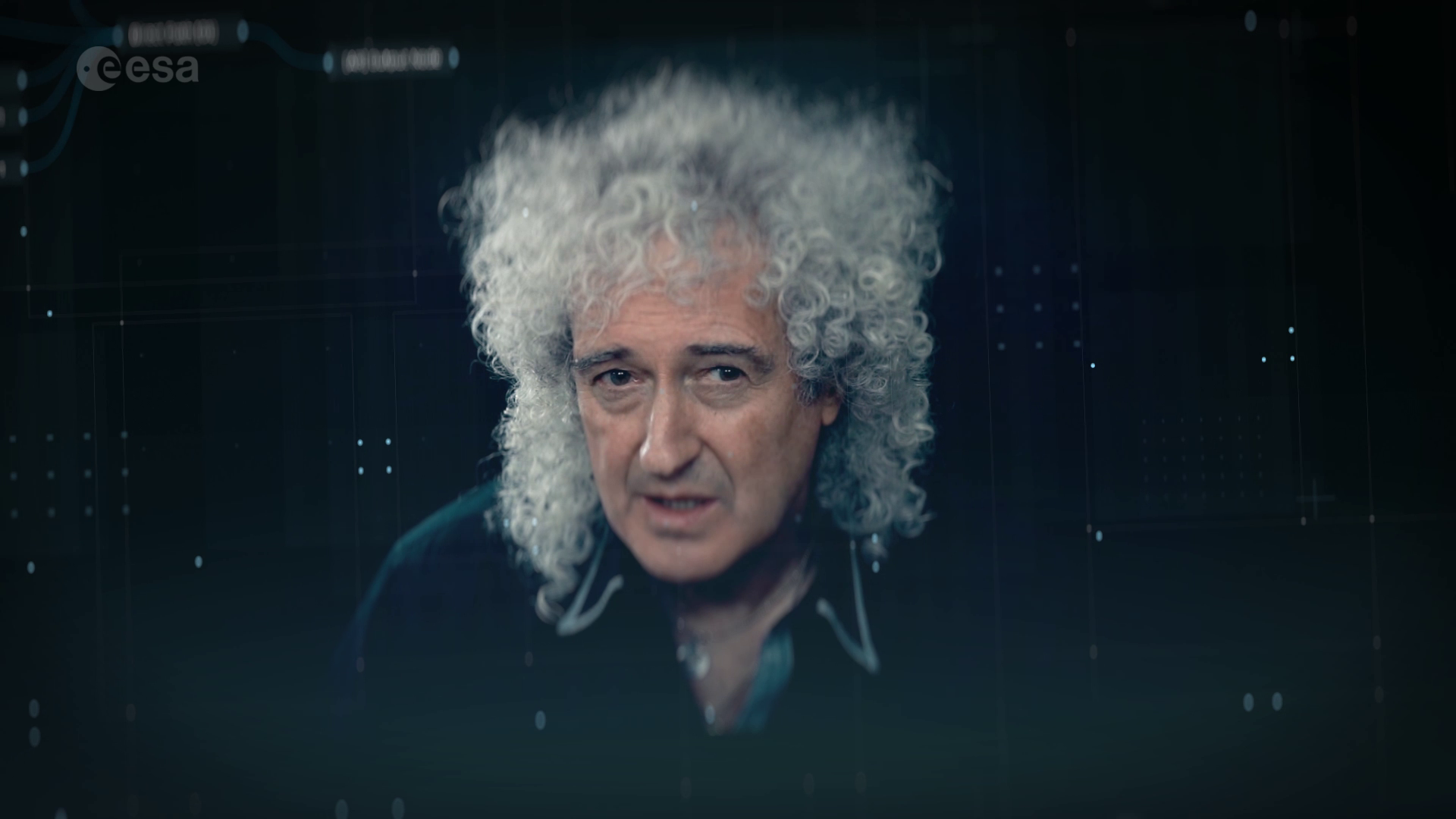
Access the video
To fully understand DART’s impact, once the dust has settled, ESA’s Hera mission will launch in 2024 and arrive at the Didymos asteroid system two years later to perform high-resolution visual, laser and radio science mapping of the asteroid moon and assess the consequences of the impact.
As Hera launches, arrives at the Didymos pair and sends its data home, completing this remarkable first test of planetary defence, ESA’s Estrack network will as ever be getting this vital space data back home.
Live coverage of DART’s impact with the asteroid Dimorphos will also air on NASA TV starting at 6 p.m. ET and the NASA website. The public also can watch live on NASA’s social media accounts on Facebook, Twitter, and YouTube.
Quelle: ESA
----
Update: 24.09.2022
.
NASA’s Asteroid-Striking DART Mission Team Has JPL Members
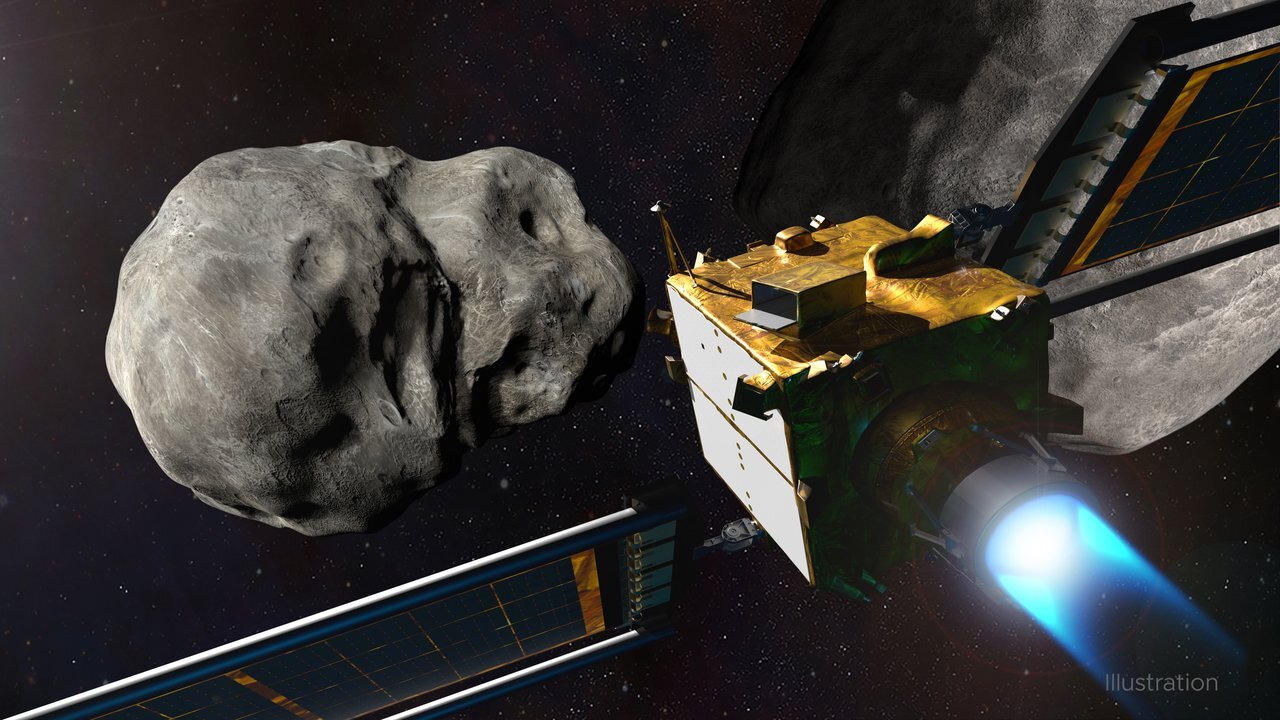
It’s a bold and complex undertaking to try impacting an asteroid. JPL is there to assist with navigators, communications, and more.
On Monday, Sept. 26, NASA’s Double Asteroid Redirection Test (DART) mission has the challenging goal of crashing its spacecraft into Dimorphos, a small moonlet orbiting a larger asteroid by the name of Didymos. While the asteroid poses no threat to Earth, this mission will test technology that could be used to defend our planet against potential asteroid or comet hazards that may be detected in the future.
Johns Hopkins Applied Physics Laboratory (APL) in Laurel, Maryland, designed and leads the ambitious mission for NASA. But as with many missions, the endeavor calls on expertise from various NASA centers. In the case of the agency’s Jet Propulsion Laboratory in Southern California, that expertise is for navigation, precise location of the target, asteroid science, and Earth-to-spacecraft communications.
“Strategic partnerships like ours with APL are the lifeblood of cutting-edge space mission development,” said Laurie Leshin, director of JPL. “Our history of working with APL goes all the way back to Voyager and extends well into the future, with missions like Europa Clipper. The work we do together makes us all – and our missions – better. We’re proud to support the DART mission and team.”
Launched in November 2021, the approximately 1,320-pound (about 600-kilogram) DART spacecraft will be at a point 6.8 million miles (11 million kilometers) from Earth when it impacts Dimorphos, which is just 525 feet (160 meters) across. Making matters more challenging still, the spacecraft will be closing in on the space rock at about 4 miles (6.1 kilometers) per second. Dimorphos orbits Didymos, which is roughly half a mile (780 meters) in diameter, every 11.9 hours.
Getting to Dimorphos
JPL’s navigation section is experienced at getting spacecraft to faraway locations accurately (think: Cassini to Saturn, Juno to Jupiter, Perseverance to Mars). Each mission brings its own set of challenges, and DART has many.
“It’s a difficult job,” said JPL’s Julie Bellerose, who leads the DART spacecraft navigation team. “A big part of what the navigation team is working on is getting DART to a 9-mile-wide (15-kilometer-wide) box in space 24 hours before impact.” At that point, Bellerose said, the mission’s final trajectory correction maneuver (the firing of thrusters to modify the direction of flight) will be executed by mission controllers back on Earth. From then on, it’s up to DART.
During the final hours of its one-way journey, DART will utilize an autonomous onboard navigator created by APL to stay on course. SMART Nav, or Small-body Maneuvering Autonomous Real Time Navigation, collects and processes images of Didymos and Dimorphos from DART’s DRACO (Didymos Reconnaissance and Asteroid Camera for Optical navigation) high-resolution camera, and then uses a set of computational algorithms to determine what maneuvering needs to be done in the final four hours before impact.
Along with the DART team, another set of JPL navigators is calculating and planning the trajectory of DART’s spacecraft companion: The Italian Space Agency’s (ASI) Light Italian CubeSat for Imaging Asteroids, or LICIACube, which has the important task of imaging DART’s impact effects on Dimorphos. The toaster-size spacecraft disconnected from DART on Sept. 11 to navigate interplanetary space on its own – with an assist from the team at JPL.
“We are working with ASI to get LICIACube to within 25 to 50 miles (40 to 80 kilometers) of Dimorphos just two to three minutes after DART’s impact – close enough to get good images of the impact and ejecta plume, but not so close LICIACube could be hit by ejecta,” said JPL’s LICIACube navigation lead Dan Lubey.
While not necessary for the DART mission to succeed, the pre- and post-impact images this small satellite’s two optical cameras LEIA (LICIACube Explorer Imaging for Asteroid) and LUKE (LICIACube Unit Key Explorer) will provide could benefit the scientific community for studies of near-Earth objects and aid in the interpretation of the DART results.
Time and Space
JPL’s Center for Near Earth Object Studies (CNEOS), an element of NASA’s Planetary Defense Coordination Office (PDCO), was tasked with determining not only the location of Didymos in space to within 16 miles (25 kilometers), but also when Dimorphos would be visible – and accessible – from DART’s direction of approach.
Along with investigators at other institutions, members of CNEOS will study the plume of rock and regolith (broken rock and dust) ejected by the impact, as well as the newly formed impact crater and the movement of Dimorphos in its orbit around its parent asteroid. Led by JPL’s Steve Chesley, they will not only examine data and imagery from DART and LICIACube, but also data from space and ground-based telescopes.
Scientists think the impact should shorten the moonlet’s orbital period around the larger asteroid by several minutes. That duration should be long enough for the effects to be observed and measured by telescopes on Earth. It should also be enough for this test to demonstrate whether kinetic impact technology – impacting an asteroid to adjust its speed and therefore its path – could in fact protect Earth from an asteroid strike.
Important contributors among those Earth-based telescopes include NASA’s Deep Space Network, the array of giant radio telescope dishes that JPL manages. With radar observations led by JPL scientist Shantanu Naidu, the massive 70-meter (230-foot) dish of Deep Space Station 14 at the network’s Goldstone complex near Barstow, California, will begin observing the aftermath of the celestial collision about 11 hours after impact, when Earth’s rotation brings Didymos and Dimorphos into view of Goldstone. Data from the echoes bounced off the two space rocks should help determine what changes occurred in the moonlet’s orbit and may even provide some coarse-resolution radar images.
Of course, radio science is only part of the Deep Space Network’s role. The navigation teams depend on it as well because the network is the means by which NASA has been communicating with spacecraft at the Moon and beyond since 1963.
More About the Mission
Johns Hopkins APL manages the DART mission for PDCO as a project of the agency’s Planetary Missions Program Office. DART is the world’s first planetary defense test mission, intentionally executing a kinetic impact into Dimorphos to slightly change its motion in space. While the asteroid does not pose any threat to Earth, the DART mission will demonstrate that a spacecraft can autonomously navigate to a kinetic impact on a relatively small asteroid and prove this is a viable technique to deflect an asteroid on a collision course with Earth if one is ever discovered. DART will reach its target on Sept. 26, 2022.
ASI’s LICIACube mission is operated by Argotec with independent navigation provided by JPL, the University of Bologna, and Politecnico di Milano. LICIACube rode along with DART throughout launch and cruise and then was released 15 days before DART’s impact. LICIACube’s mission focuses on imaging the results of the DART’s impact (the crater and ejecta plume) as well as the unimpacted side of Dimorphos.
Quelle: NASA

